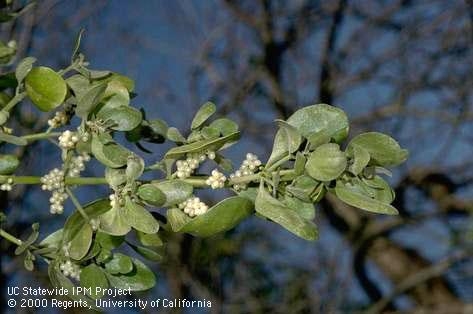Mistletoe is a familiar sight of the season, often found wrapped in ribbon and hung for certain festivities this time of year. But did you know it is actually a parasitic plant that grows on a number of landscape trees in California?

(Credit: Jack Kelly Clark)
Both types of mistletoe grow through tree bark and into the tree's tissue, living off the host tree. Healthy trees can typically tolerate a few mistletoe infections although individual branches may be weakened by the parasite. Trees with a heavy infestation can be stunted or even killed if they are stressed by drought or disease.
What can be done about unwelcome mistletoe? The most effective way to control mistletoe and prevent its spread is to prune out infected branches as soon as possible. If mistletoe is infecting a major branch or trunk, you can cut off the mistletoe and wrap the area to exclude light. See our Pest Notes: Mistletoe for additional instructions.
Reducing mistletoe is a community effort since it spreads easily from tree to tree. So if you find yourself underneath some mistletoe this season, be sure to share this information with your neighbor!